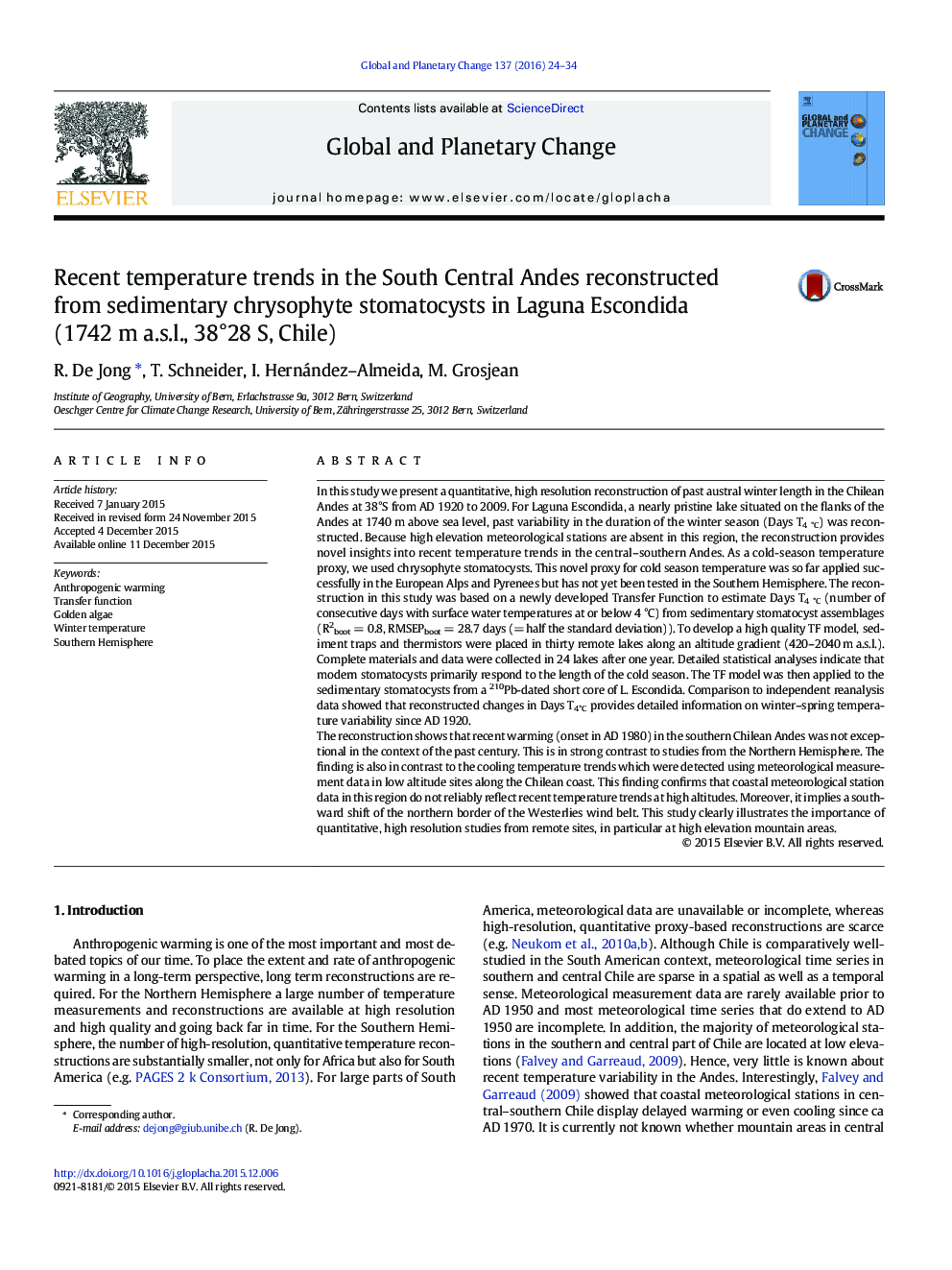| کد مقاله | کد نشریه | سال انتشار | مقاله انگلیسی | نسخه تمام متن |
|---|---|---|---|---|
| 4463326 | 1621645 | 2016 | 11 صفحه PDF | دانلود رایگان |

• New stomatocyst–winter length Transfer Function with good performance statistics
• Stomatocysts confirmed as reliable proxy for past winter–spring temperatures
• Winter length in the Chilean Andes has reduced substantially since AD 1980.
• Recent warming in the Chilean Andes was not unprecedented in last century.
• Recent high altitude temperature trends diverge from low altitude measurements.
In this study we present a quantitative, high resolution reconstruction of past austral winter length in the Chilean Andes at 38°S from AD 1920 to 2009. For Laguna Escondida, a nearly pristine lake situated on the flanks of the Andes at 1740 m above sea level, past variability in the duration of the winter season (Days T4 °C) was reconstructed. Because high elevation meteorological stations are absent in this region, the reconstruction provides novel insights into recent temperature trends in the central–southern Andes. As a cold-season temperature proxy, we used chrysophyte stomatocysts. This novel proxy for cold season temperature was so far applied successfully in the European Alps and Pyrenees but has not yet been tested in the Southern Hemisphere. The reconstruction in this study was based on a newly developed Transfer Function to estimate Days T4 °C (number of consecutive days with surface water temperatures at or below 4 °C) from sedimentary stomatocyst assemblages (R2boot = 0.8, RMSEPboot = 28.7 days (= half the standard deviation)). To develop a high quality TF model, sediment traps and thermistors were placed in thirty remote lakes along an altitude gradient (420–2040 m a.s.l.). Complete materials and data were collected in 24 lakes after one year. Detailed statistical analyses indicate that modern stomatocysts primarily respond to the length of the cold season. The TF model was then applied to the sedimentary stomatocysts from a 210Pb-dated short core of L. Escondida. Comparison to independent reanalysis data showed that reconstructed changes in Days T4°C provides detailed information on winter–spring temperature variability since AD 1920.The reconstruction shows that recent warming (onset in AD 1980) in the southern Chilean Andes was not exceptional in the context of the past century. This is in strong contrast to studies from the Northern Hemisphere. The finding is also in contrast to the cooling temperature trends which were detected using meteorological measurement data in low altitude sites along the Chilean coast. This finding confirms that coastal meteorological station data in this region do not reliably reflect recent temperature trends at high altitudes. Moreover, it implies a southward shift of the northern border of the Westerlies wind belt. This study clearly illustrates the importance of quantitative, high resolution studies from remote sites, in particular at high elevation mountain areas.
Journal: Global and Planetary Change - Volume 137, February 2016, Pages 24–34